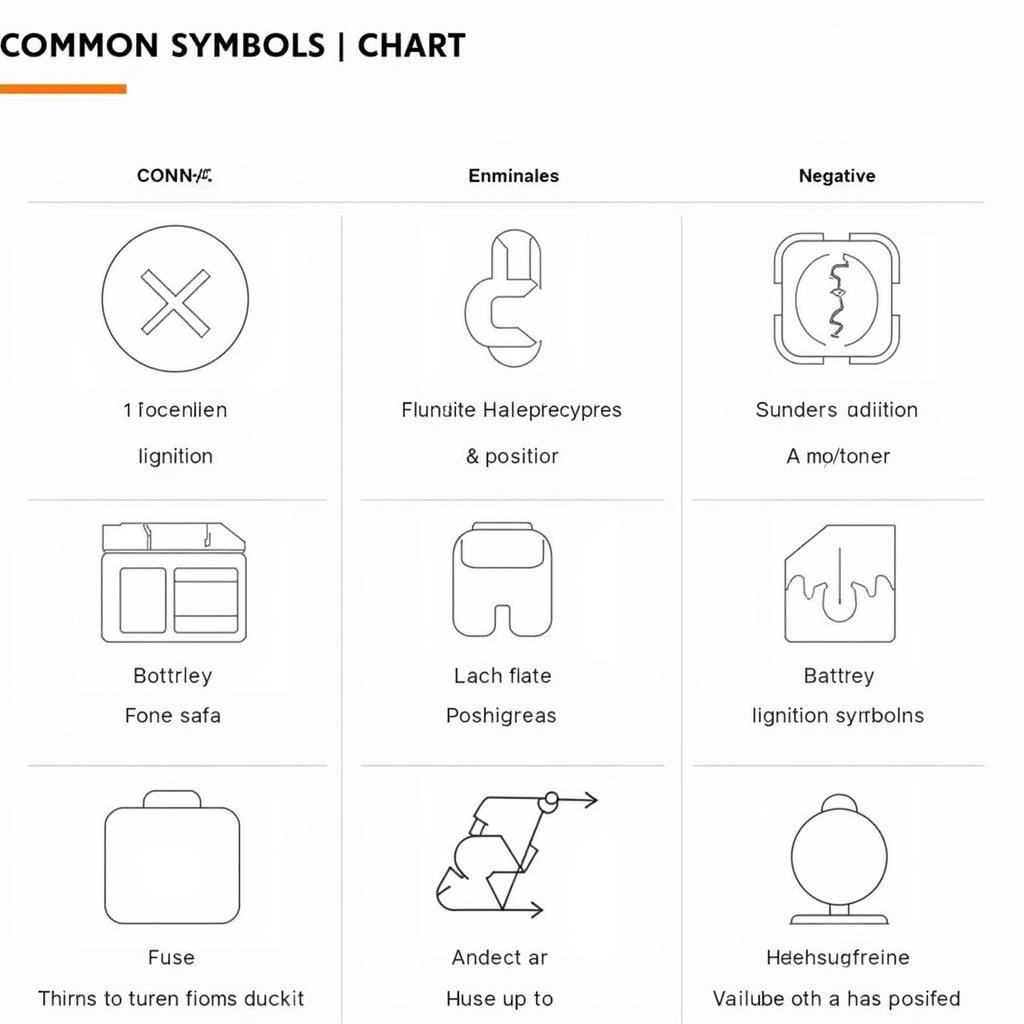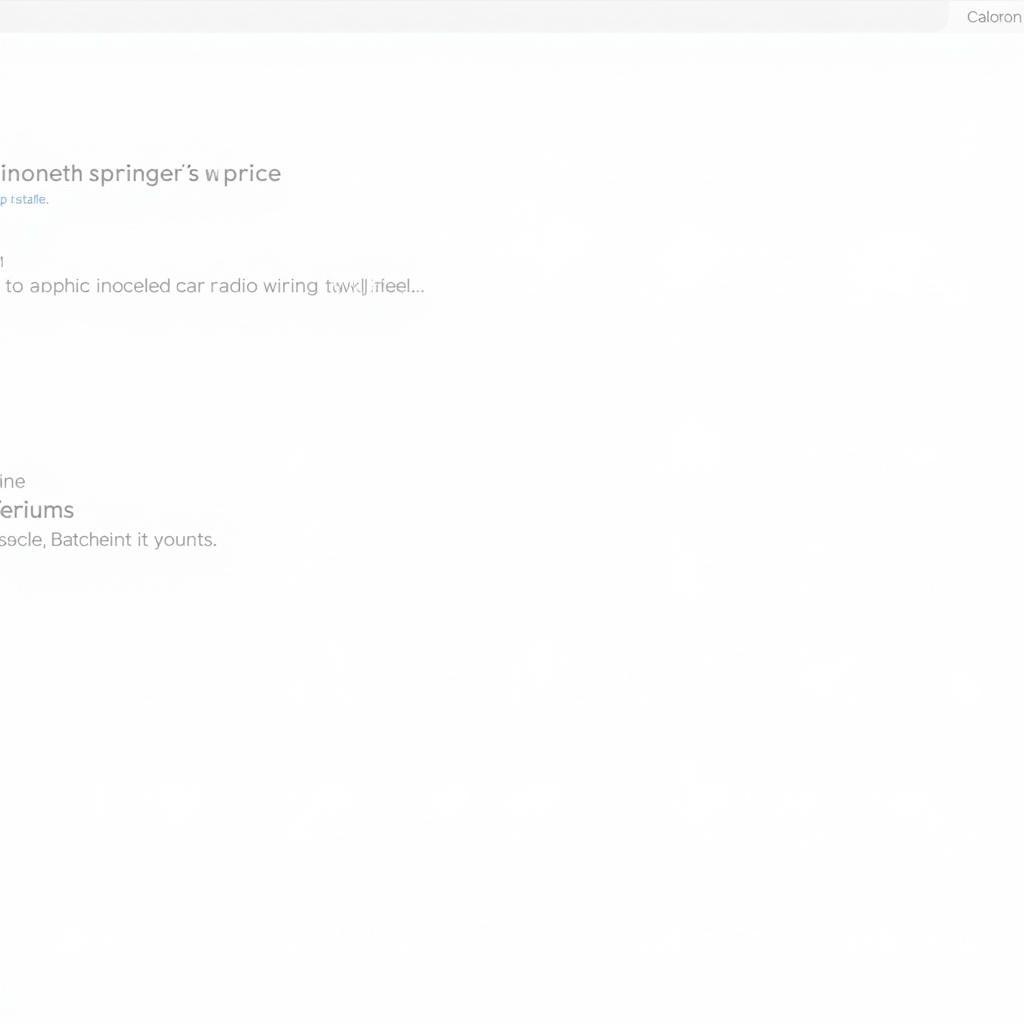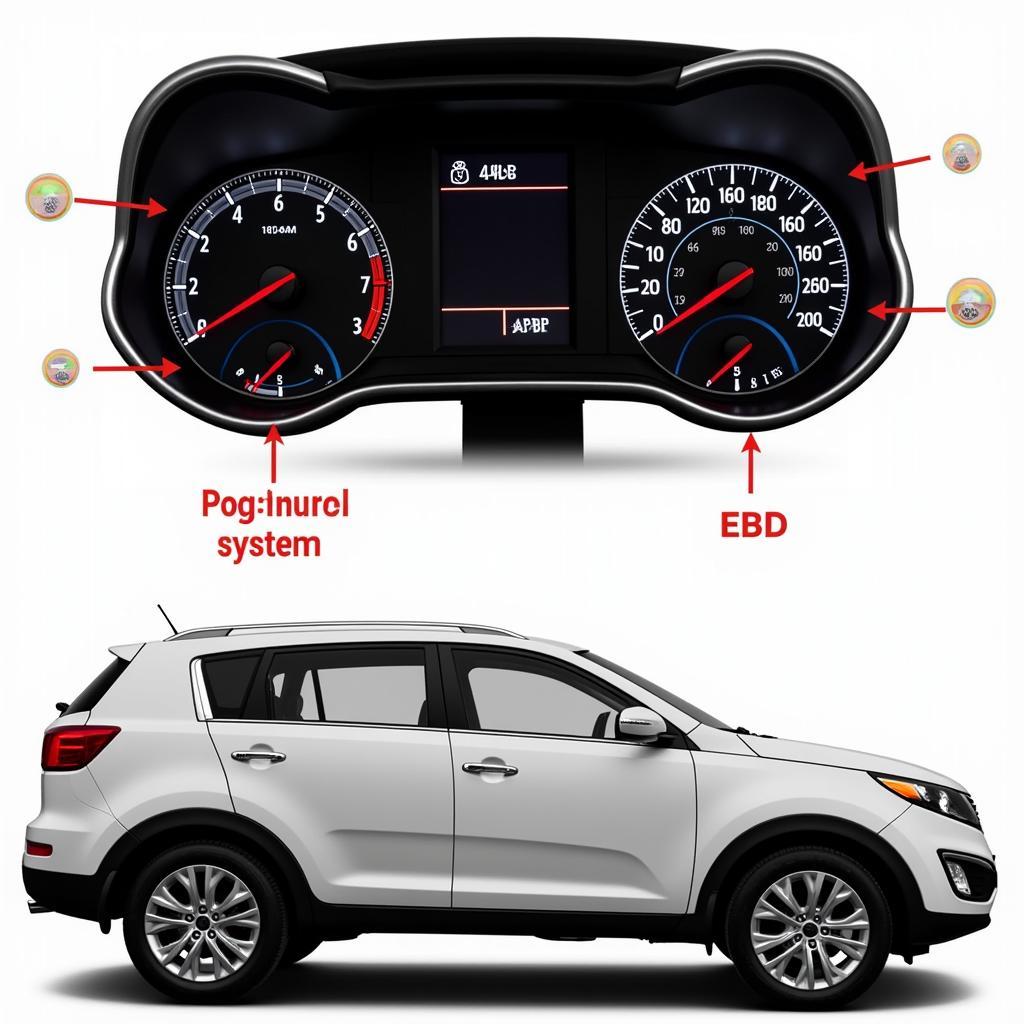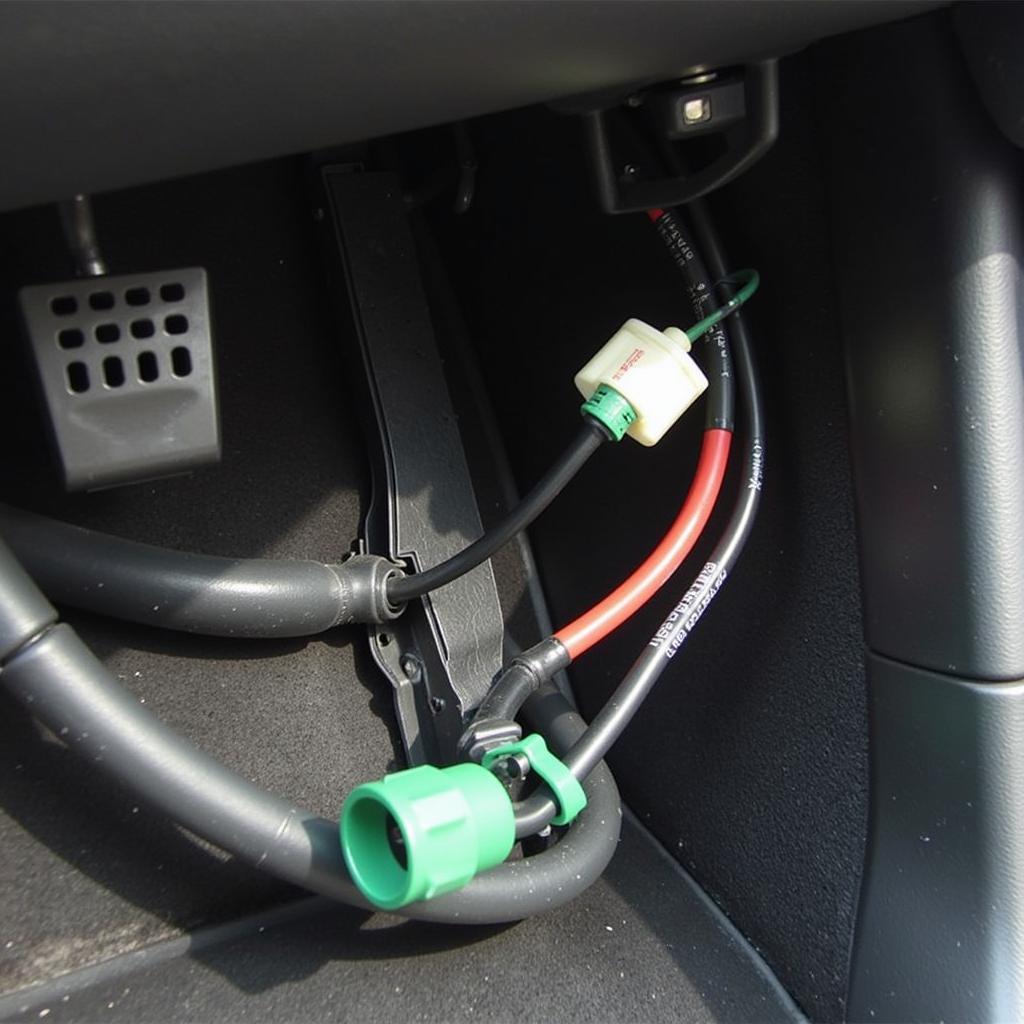Understanding your Pioneer car radio’s wiring schematic is crucial for any installation, troubleshooting, or upgrade. Whether you’re a seasoned car audio enthusiast or a beginner just starting out, navigating these diagrams can seem daunting. This guide provides a comprehensive breakdown of how to interpret and utilize wiring schematics on a Pioneer car radio, empowering you to confidently tackle your car audio projects.
Understanding the Basics of Pioneer Car Radio Wiring Schematics
A wiring schematic is essentially a roadmap of your car radio’s electrical system. It details the connections between the various components, including the head unit, speakers, amplifier, and power source. Understanding this map is essential for a successful installation and can also be invaluable when diagnosing problems. These schematics use standardized symbols to represent different components and connections, which we’ll explore in detail.
Common Symbols in Pioneer Wiring Diagrams
Familiarizing yourself with these standard symbols is the first step in decoding your Pioneer car radio wiring schematic. Some of the most common symbols include:
- Battery (+): Represents the positive terminal of your car’s battery, the primary power source.
- Ground (-): Indicates the negative terminal or ground connection, essential for completing the electrical circuit.
- Ignition (ACC): This connection provides power to the radio only when the ignition is turned on.
- Speakers: Usually represented by a circle with a positive (+) and negative (-) terminal.
- Antenna: Symbolized by a triangle or vertical line representing the antenna connection.
- Fuse: A rectangular symbol often marked with its amperage rating, protecting the circuit from overloads.
 Common Pioneer Car Radio Wiring Schematic Symbols
Common Pioneer Car Radio Wiring Schematic Symbols
Locating Your Pioneer Car Radio Wiring Schematic
Finding the correct wiring schematic for your specific Pioneer car radio model is crucial. There are several ways to locate this information:
- Owner’s Manual: Your car radio’s owner’s manual should contain a wiring diagram specific to your model.
- Pioneer’s Website: Pioneer’s website often provides manuals and wiring diagrams for their various car radio models in the support section.
- Online Forums and Communities: Car audio forums and communities can be valuable resources for finding wiring diagrams, especially for older models.
Once you’ve located the schematic, take the time to study it carefully before starting any work.
Utilizing Online Resources for Pioneer Wiring Information
The internet is a treasure trove of information for car audio enthusiasts. Numerous websites, forums, and communities dedicated to car audio can provide helpful tips, advice, and even wiring diagrams for your Pioneer car radio.
 Online Resources for Finding Pioneer Car Radio Wiring Diagrams
Online Resources for Finding Pioneer Car Radio Wiring Diagrams
Interpreting and Using the Wiring Schematic
Now that you have the schematic, let’s delve into how to interpret it effectively. Each wire is typically color-coded and labeled, corresponding to specific functions. The schematic will show you where each wire connects to on the head unit and the corresponding connection in your vehicle.
Connecting Your Pioneer Car Radio: A Step-by-Step Guide
- Prepare Your Vehicle: Disconnect the negative terminal of your car battery to prevent electrical shocks and damage to the radio.
- Identify the Wires: Use the wiring schematic to identify the power, ground, speaker, and antenna wires.
- Make the Connections: Carefully connect each wire from the Pioneer car radio harness to the corresponding wire in your vehicle’s wiring harness, matching the colors and labels.
- Test the Connections: Reconnect the car battery’s negative terminal and test the radio to ensure everything is working correctly.
“Taking the time to double-check your connections before powering on the radio can prevent costly mistakes,” advises John Smith, a certified automotive electrician with over 20 years of experience.
Troubleshooting with Your Pioneer Car Radio Wiring Schematic
If you encounter any issues with your car radio, the wiring schematic can be an invaluable troubleshooting tool. By tracing the connections on the diagram, you can identify potential problems like loose connections, blown fuses, or short circuits.
Common Wiring Issues and Solutions
- No Power: Check the power and ground connections, as well as the fuse.
- No Sound: Verify the speaker connections and ensure the speakers are functioning correctly.
- Poor Reception: Inspect the antenna connection and the antenna itself for damage.
“Understanding your wiring schematic can empower you to diagnose and fix many common car audio problems yourself, saving you time and money,” says Maria Garcia, an automotive electronics instructor at a leading technical institute.
Conclusion
Mastering the art of reading wiring schematics on a Pioneer car radio opens up a world of possibilities for customizing and enhancing your car audio system. By following the steps outlined in this guide, you can confidently install, troubleshoot, and upgrade your car radio, ensuring a seamless and enjoyable listening experience. Remember, understanding your Pioneer car radio wiring schematic is the key to unlocking the full potential of your car audio system.
FAQ
- Where can I find the wiring schematic for my specific Pioneer car radio model? Check your owner’s manual, the Pioneer website, or online forums and communities.
- What do the different symbols on the wiring schematic represent? They represent various components like the battery, ground, ignition, speakers, antenna, and fuse.
- What should I do if my car radio has no power? Check the power, ground, and fuse connections.
- How can I troubleshoot speaker issues using the wiring schematic? Verify the speaker connections and ensure the speakers are working correctly.
- What if my car radio has poor reception? Check the antenna connection and the antenna itself for damage.
- Why is it important to disconnect the car battery’s negative terminal before working on the car radio? To prevent electrical shocks and damage to the radio.
- Can I install a Pioneer car radio myself using the wiring schematic? Yes, with careful planning and execution, you can install it yourself.


